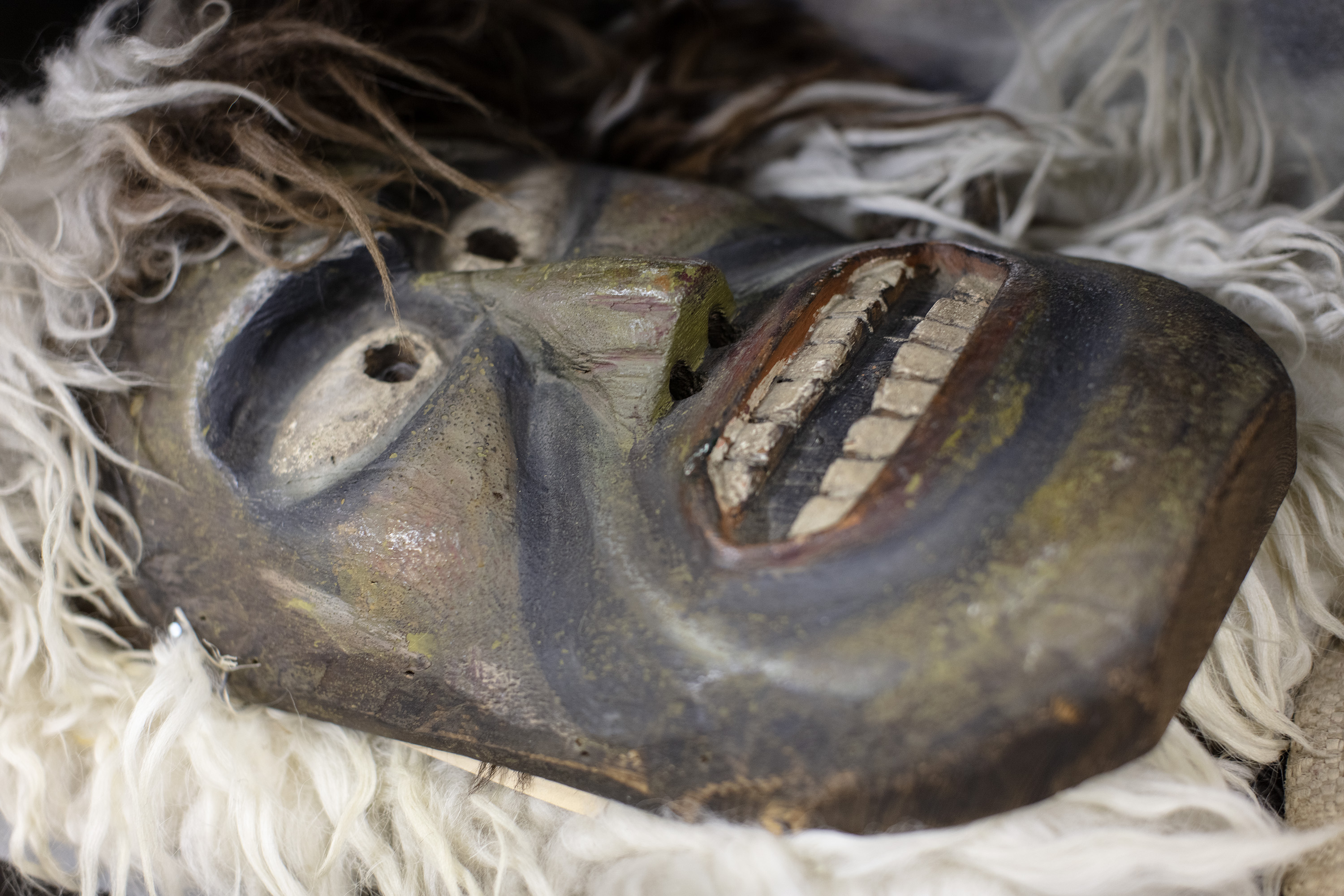Swiss attempts new route on Annapurna I

Accomplished Swiss climber Ueli Steck is set to climb the South Face of Annapurna I – the world's tenth highest peak situated in the Himalayas of Nepal.
This is Steck’s second biggest project this year after having set a new speed record on the infamous Eiger North Face in February, scaling the Swiss peak in three hours and 54 minutes.
swissinfo’s Billi Bierling hooked up with Steck in the Nepalese capital, Kathmandu, after he had come back from an acclimatisation trip in the Everest region.
Steck was writing postcards at the poolside of a hotel, seemingly relaxed and not looking like someone who had just climbed two major Himalayan peaks.
On his trip he had conquered Cholatse (6,335 m) and quickly nipped up Pumori (7,165 m), which is a technical Himalayan expedition peak most people take at least two weeks to climb.
“The idea to climb Pumori only arose when I went trekking. So, I left the lodge in the morning and got to the summit in the middle of the night. I was back 24 hours later,” Steck told swissinfo.
Of course, he did not climb the standard southeast ridge but the West Face, which is a steep ice wall he and his friend Ueli Bühler had already climbed in 2001. “I would not dare go on the normal route; it is far too dangerous,” he said with a smile.
Steck, who is 30, grew up in the Emmental region of Switzerland and started climbing at the age of 12. “I used to play ice hockey like my brothers but when a friend of my father took me climbing one day I was immediately hooked,” he said.
A dream comes true
He started his professional life as a carpenter, something he enjoyed but does not really miss. “I think for me a dream has come true. When I was 20 I never thought I would actually be able to earn my living with climbing.”
Steck is currently on his way to Annapurna I (8,091 m) to finish an unclimbed route that was first attempted by French climbers Jean-Christophe Lafaille and Pierre Beghin in 1992.
The expedition had a tragic end when Beghin fell from 7,100 metres to his death. To this day nobody has repeated this route.
Steck has been preparing for this project for the past two years and even though he says he is not scared he seemed to get a bit nervous sitting by the pool in Kathmandu.
“I have to pull myself together and avoid thinking too much about it as otherwise the face will even become higher and more overhanging. It is a big project and I only have a slim chance to get up,” he said.
But if someone has a chance it is Steck.
“Very Swiss”
“I don’t think I am physically any different from other strong climbers but I am very Swiss and I get very focused on a project. Maybe that is what drives me,” he said modestly.
But even though mountaineering is still a personal challenge for Steck he also needs to keep his sponsors happy. “There is some pressure as my sponsors want to see results.”
Steck, who has not yet climbed the highest mountain in the world, is slightly critical of the big commercial expeditions on Mount Everest.
“I have seen people who are attempting Everest and most of them look as if they would never get up. I think Everest has become a big business and most people fool themselves by taking oxygen,” he said.
All his climbs have been done without oxygen and for Steck it would be cheating to use “gas”.
“I would never touch oxygen as the experience would not be the same. People are fooling themselves as they only pretend to be at a high altitude.”
However, despite the commercialisation of Mount Everest, Steck would still love to stand on the top of the world one day if wallet and time allow it. But for now his only goal is to defeat the 3,000-meter high wall of the south face of Annapurna I.
“After this expedition I will need a holiday – mentally and physically – and I will not even think about another project.”
swissinfo, Billi Bierling in Kathmandu
Annapurna I (8,091 m) is the tenth highest mountain in the world and is located in the west of Nepal.
Annapurna was first climbed via the North Face by a French expedition led by Maurice Herzog in 1950. It was also the first time a mountain higher than 8,000 metres was conquered.
Annapurna I is notorious for its avalanche danger. Legendary climbers Anatoli Boukreev from Russia and Christian Kuntner from Italy died on the mountain.
French climbers Pierre Beghin and Jean-Christophe Lafaille attempted the same route in 1992 but Beghin fell to his death and Lafaille took five days to get down the mountain on his own.
Lafaille died on Makalu (8,463 m) in January 2006 when he was trying to do a solo winter ascent.

In compliance with the JTI standards
More: SWI swissinfo.ch certified by the Journalism Trust Initiative











You can find an overview of ongoing debates with our journalists here . Please join us!
If you want to start a conversation about a topic raised in this article or want to report factual errors, email us at english@swissinfo.ch.